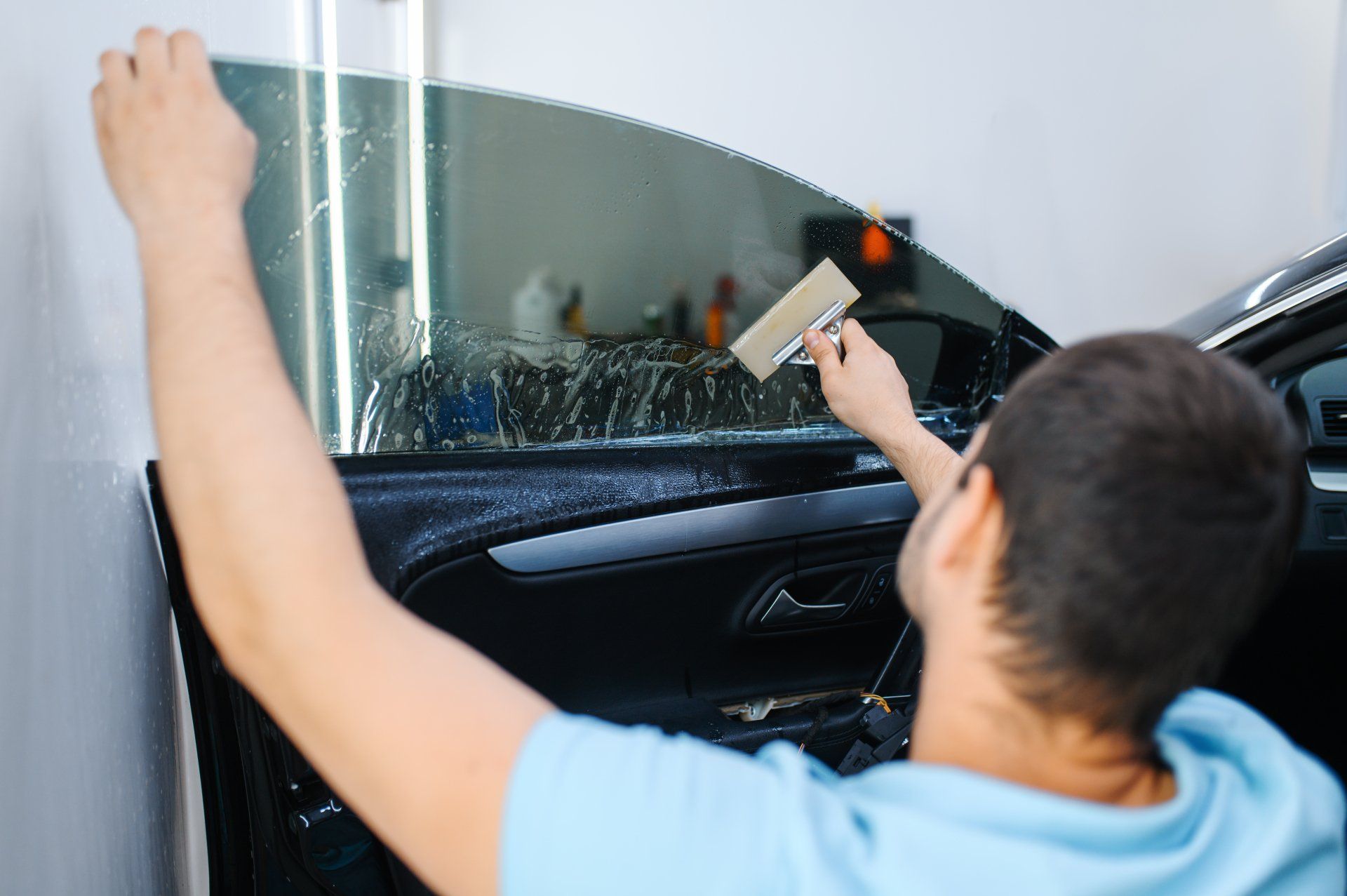The Refine of Specialist Window Tinting Explained
Understanding the process of professional home window tinting requires a gratitude for the intricacies involved in making certain both aesthetic appeal and useful quality. From choosing the right movie type to the meticulous preparation of windows, each action plays a critical role in attaining a perfect application. Following these preliminary prep work, the mindful cutting and application of the movie need accuracy to avoid imperfections. Nonetheless, the final examination and assistance on maintenance stay paramount for long-lasting satisfaction. What factors add to the total performance of the tinting process, and exactly how can they affect both looks and performance?
Picking the Right Window Movie
Choosing the right home window film involves recognizing numerous elements that affect both aesthetic allure and performance. The initial factor to consider is the kind of film, which can vary from dyed, metalized, to ceramic films. Dyed movies mainly give personal privacy and visual improvement, while metalized films reflect heat and UV rays, boosting power efficiency. Ceramic films, although generally more costly, deal superior performance without compromising visibility.
Following, take into consideration the movie's Visible Light Transmission (VLT) portion, which figures out exactly how much light goes into the space. A reduced VLT supplies higher privacy and warmth rejection but might decrease all-natural light substantially. In addition, the movie's solar heat gain coefficient (SHGC) is vital; a lower SHGC indicates far better thermal efficiency, assisting to preserve indoor comfort.

Preparing the Windows
As soon as the appropriate home window movie has been picked, the following step is thoroughly preparing the windows for installation. This prep work is important for achieving ideal attachment and ensuring a perfect look post-installation.
The initial task includes cleansing the home windows thoroughly (window tinting). A high-quality glass cleaner is necessary, preferably one that is ammonia-free to avoid damaging any window seals or color products. Using a lint-free cloth or paper towels, professionals must get rid of any type of dirt, dust, or oil, paying unique focus to the sides and edges where particles usually collects

Reducing the Film
An exact strategy to reducing the movie is vital for making certain a best fit on the prepared home windows. This step requires both ability and focus to detail, as inaccuracies can cause unsightly gaps or overlaps that compromise the aesthetic and useful qualities of the color.
Before reducing, the specialist need to determine the home window measurements properly, representing any type of special forms or shapes. It is suggested to use premium window film, as this product has a tendency to be extra flexible during the cutting procedure. The film is usually laid level on a tidy, smooth surface, and a sharp utility knife is employed to ensure tidy sides.
To attain optimum outcomes, lots of specialists make use of themes produced from previous installations or use software application to design precise patterns. A typical method involves adding an extra margin to the theme, allowing for modifications during the application phase.
Furthermore, reducing the film in a regulated atmosphere reduces the danger of impurities affecting the sticky side. By sticking to these careful methods, home window tinting specialists can make sure that the movie not just fits effortlessly however also executes effectively gradually, improving both look and capability.
Using the Color
After meticulously reducing the movie to the proper dimensions, the next action entails applying the color to the home window surface area. This process begins with making certain that the home window is tidy and devoid of any kind of dust, debris, or residues that might affect adhesion. A specific cleansing remedy is usually made use of, adhered to by detailed drying out with a lint-free cloth.
As soon as the surface is useful link prepared, the installer will thoroughly place the color film against the glass. It is important to line up the movie accurately to avoid misplacement, as any errors can cause an unprofessional appearance. To facilitate this, the installer may utilize a light haze of application solution on the adhesive side of the movie, permitting for minor repositioning if essential.
Using a squeegee, the installer will after that begin to push the film onto the glass, functioning from the facility in an outward direction to get rid of air bubbles and make certain a browse around these guys firm bond. This strategy is crucial, as it guarantees a smooth and perfect finish. Throughout the application, focus to information is essential to prevent creases or imperfections, making sure that the tint not just boosts aesthetic appeals however likewise gives the desired functionality.
Last Examination and Treatment
The final evaluation is a crucial action in the window tinting process, ensuring that the installment fulfills both aesthetic and practical criteria. During this phase, professionals carefully examine the installed color for any type of blemishes, such as bubbles, creases, or imbalances. A detailed analysis additionally consists of inspecting the adherence of the film to the glass, along with its harmony and overall look.
After the assessment, proper treatment and upkeep directions are offered to the client. It is essential to notify them about the suggested timeline for cleansing the tinted windows, usually suggesting a wait of a minimum of thirty day after setup to enable the glue to cure completely. Customers must be enlightened on ideal cleaning items and techniques, highlighting the avoidance of ammonia-based cleaners that can damage the color.
Additionally, specialists must recommend clients on the value of normal maintenance to lengthen the life of the tint. This includes routine look for indications of wear or damages and reacting quickly to any type of issues. By ensuring an extensive final assessment and providing clear care guidelines, window tinting professionals enhance consumer complete satisfaction and the longevity of their job.
Final Thought
The specialist window tinting process includes several crucial steps that ensure premium outcomes. Selecting the appropriate film type, preparing the home windows carefully, accurately cutting the film, and applying it with precision are crucial for attaining a perfect coating. An extensive last evaluation warranties that all standards are met, while appropriate post-installation treatment he said is important for keeping the color's durability and performance. Following these procedures ultimately improves both the aesthetic allure and functionality of the colored windows.